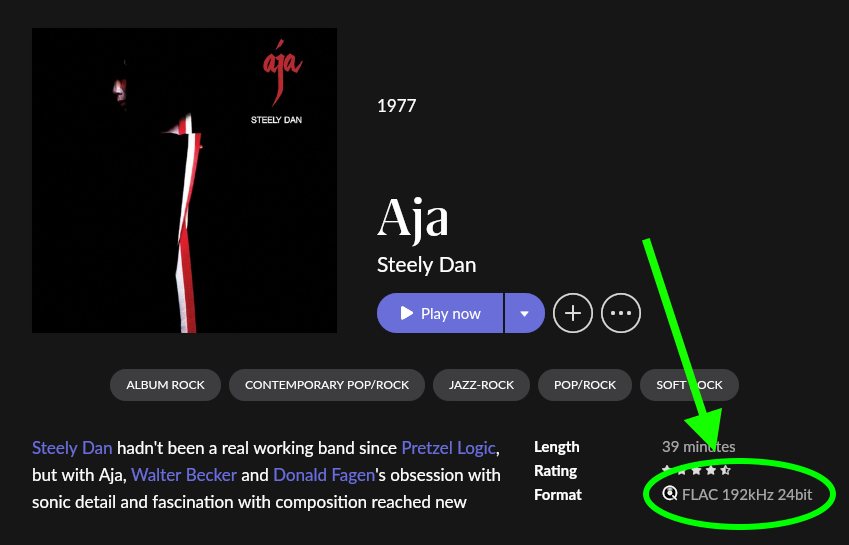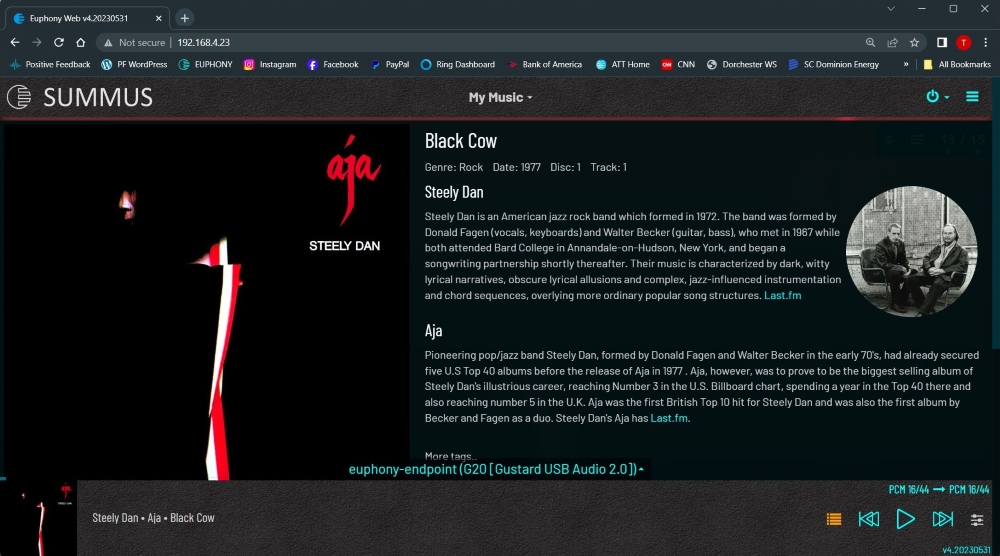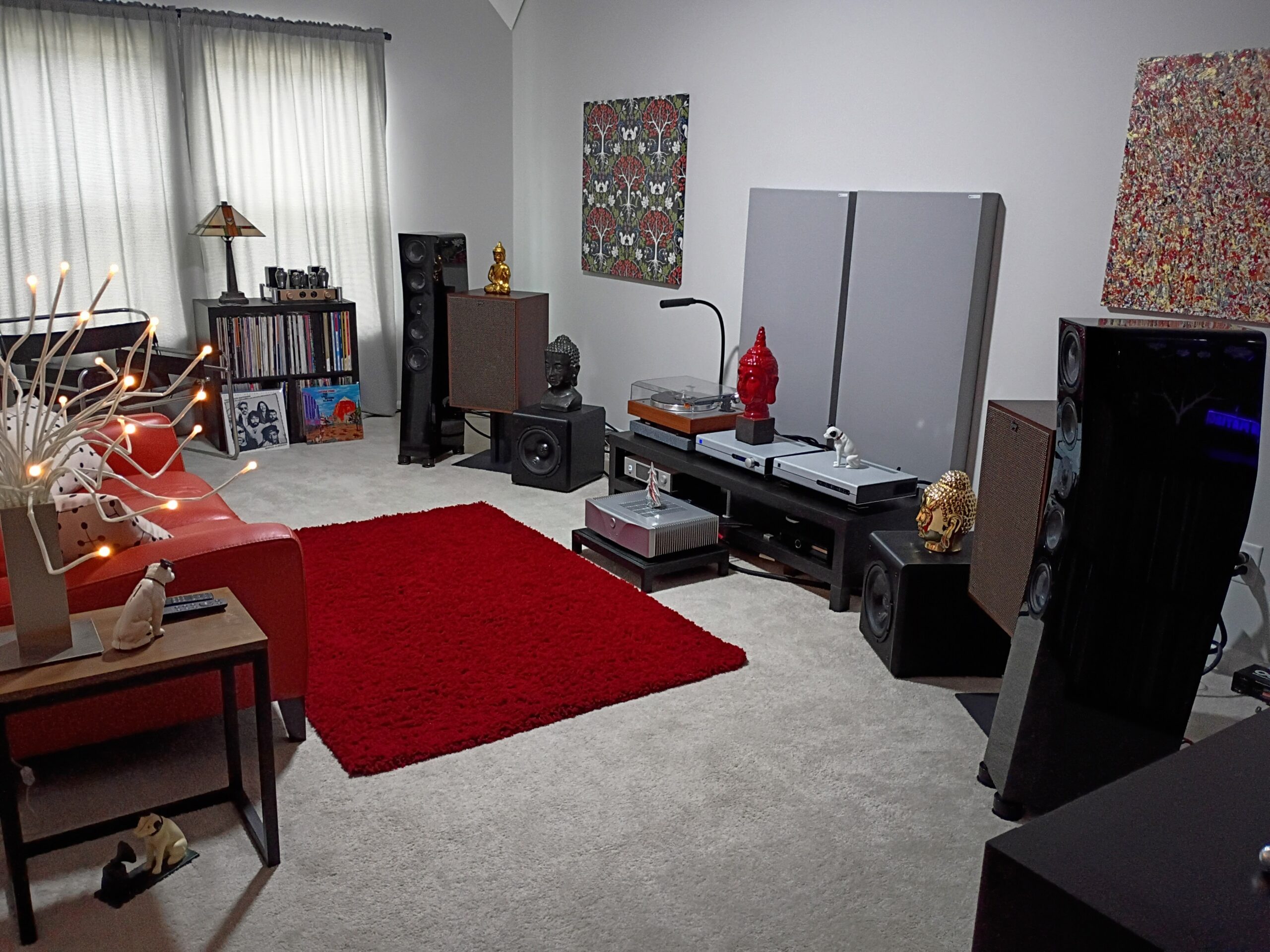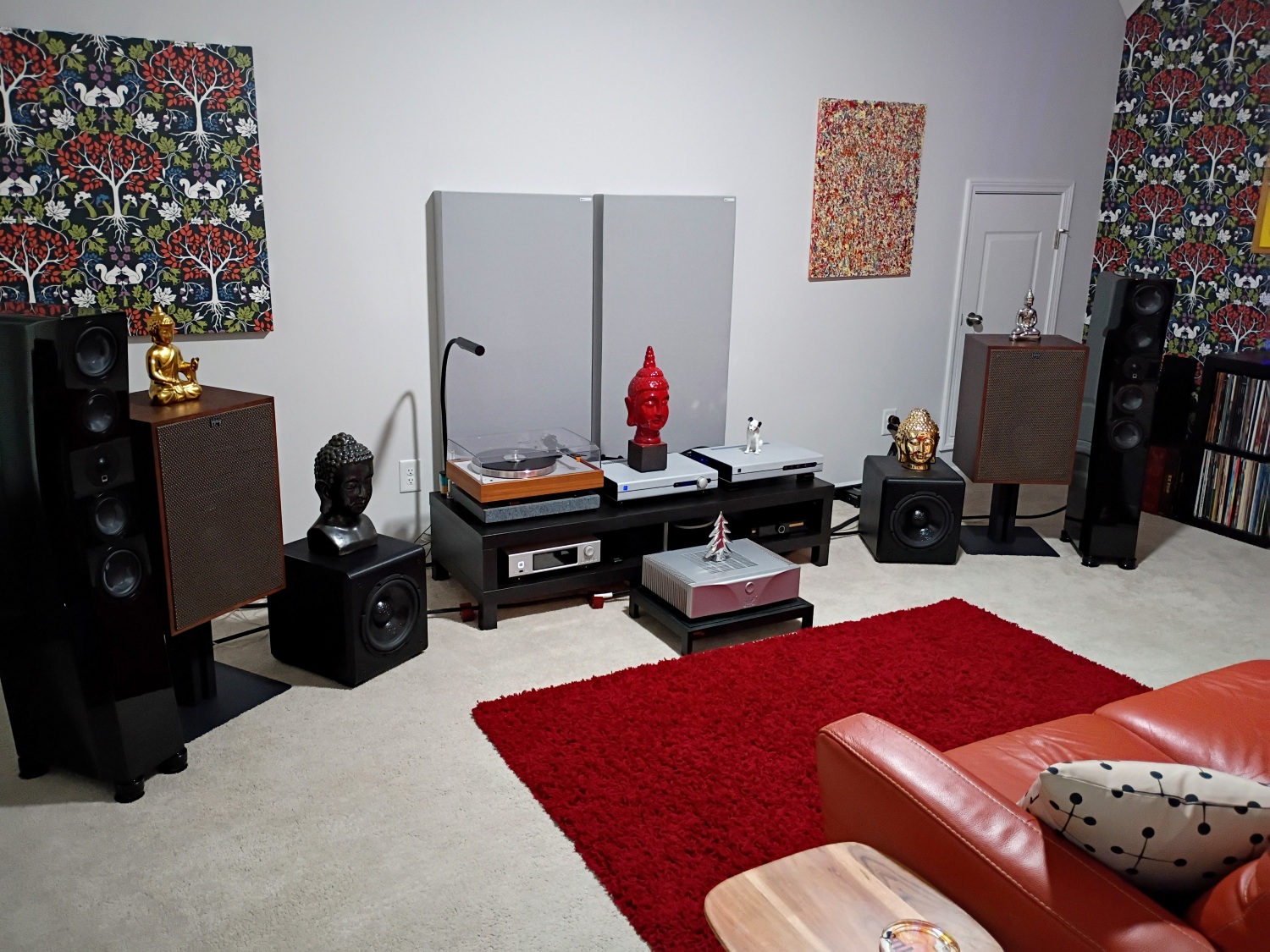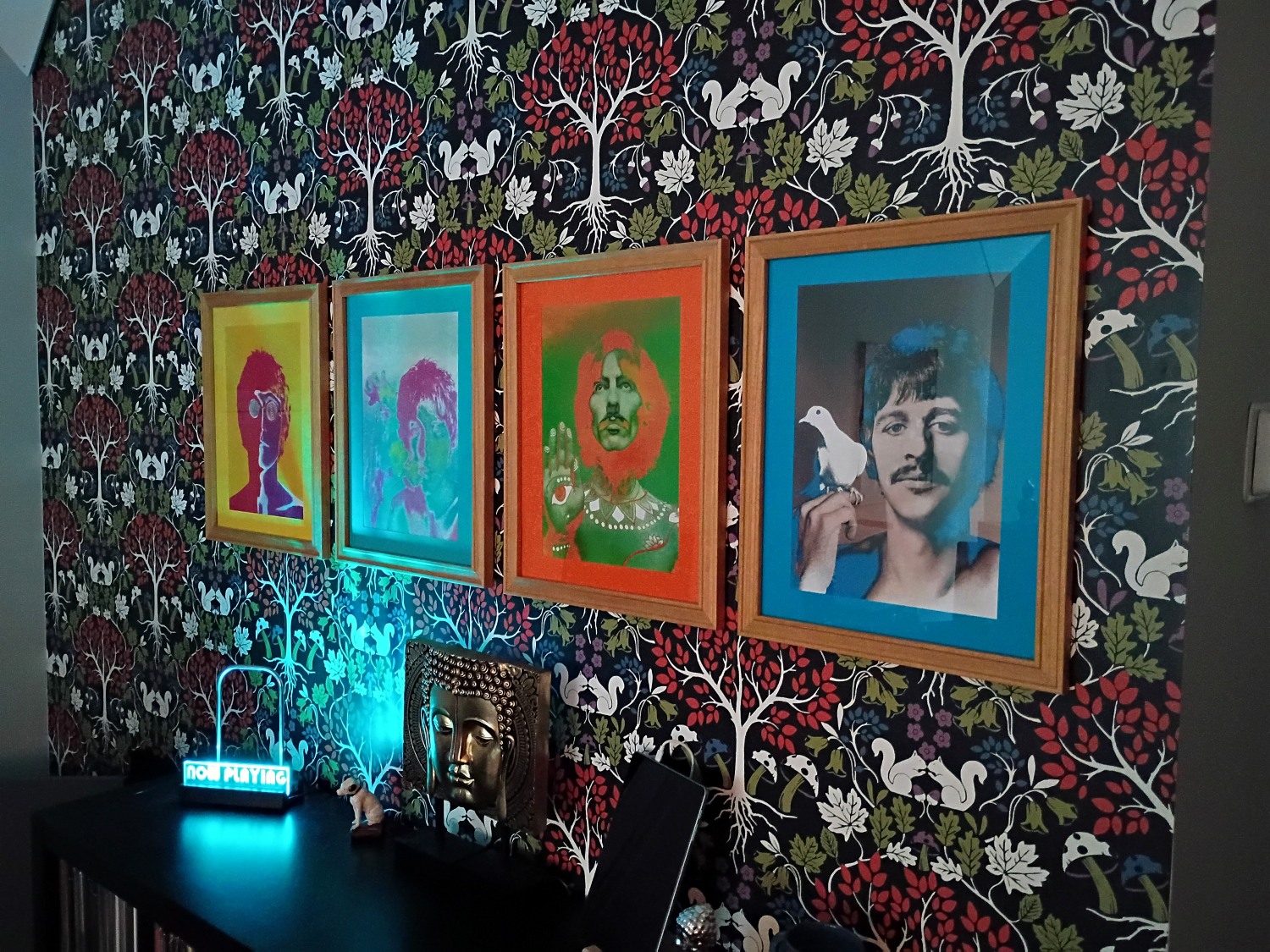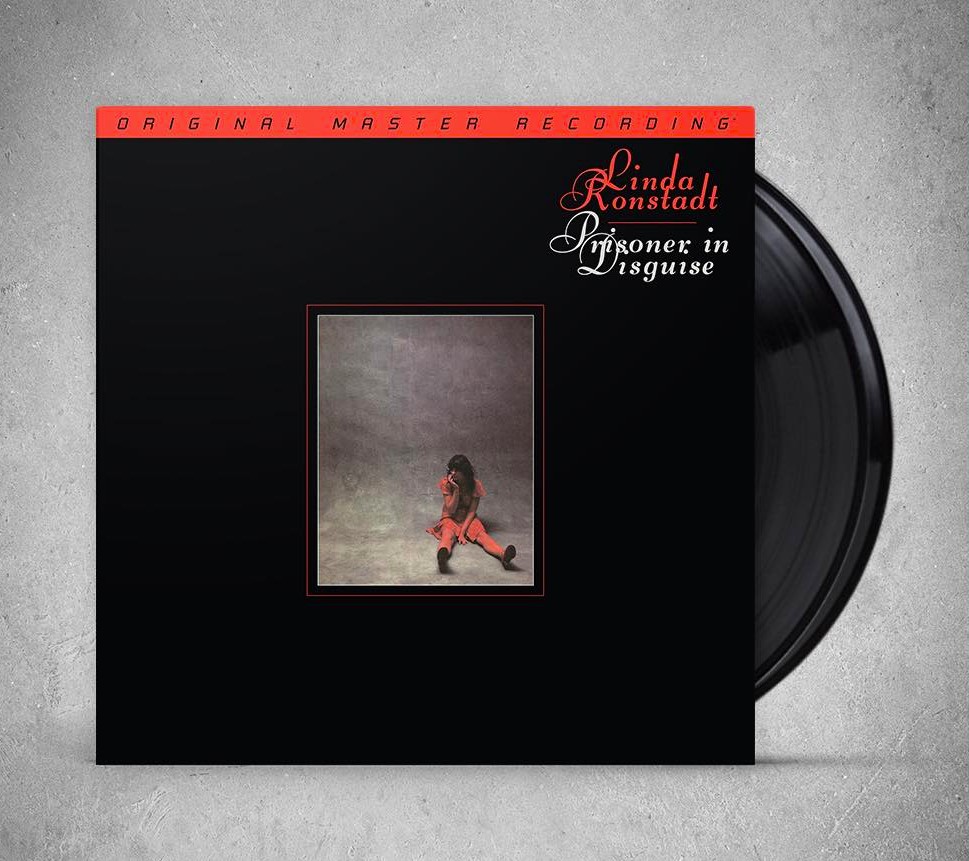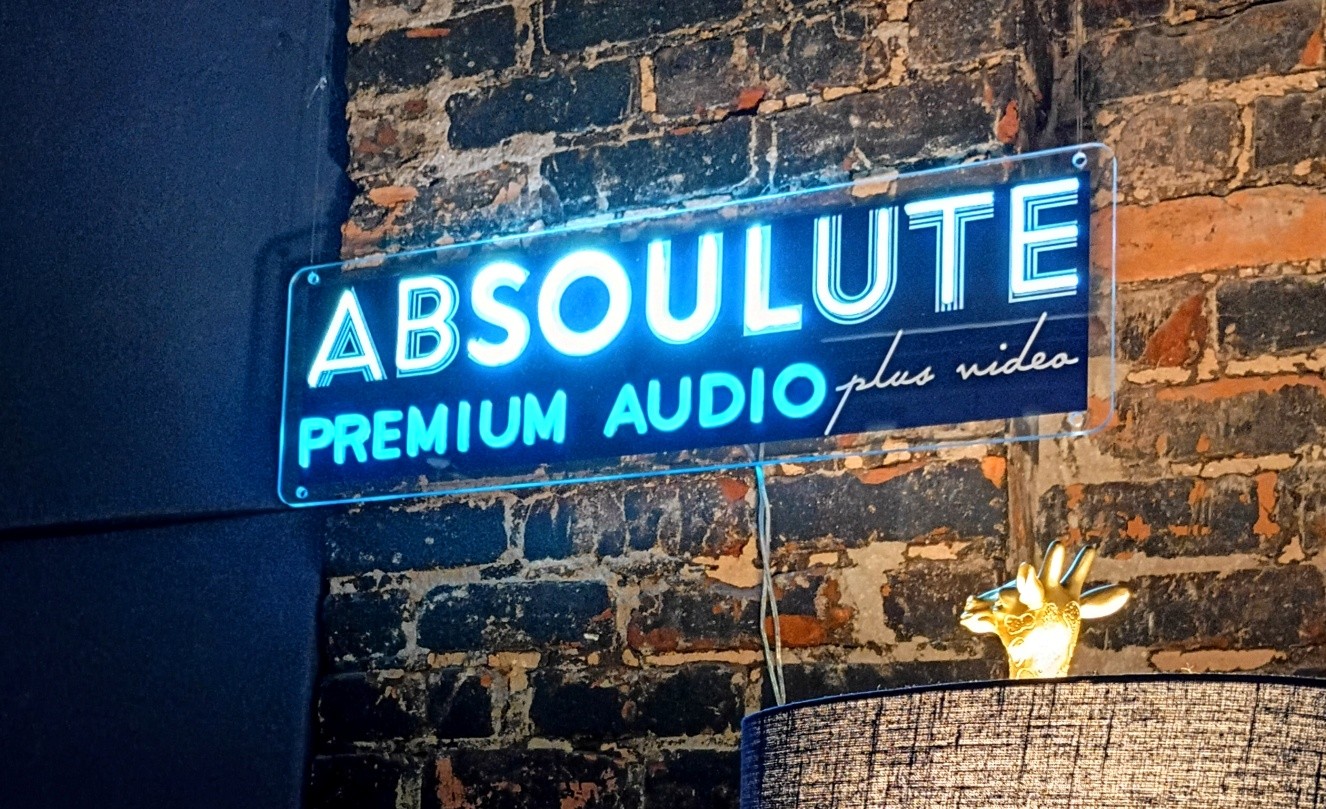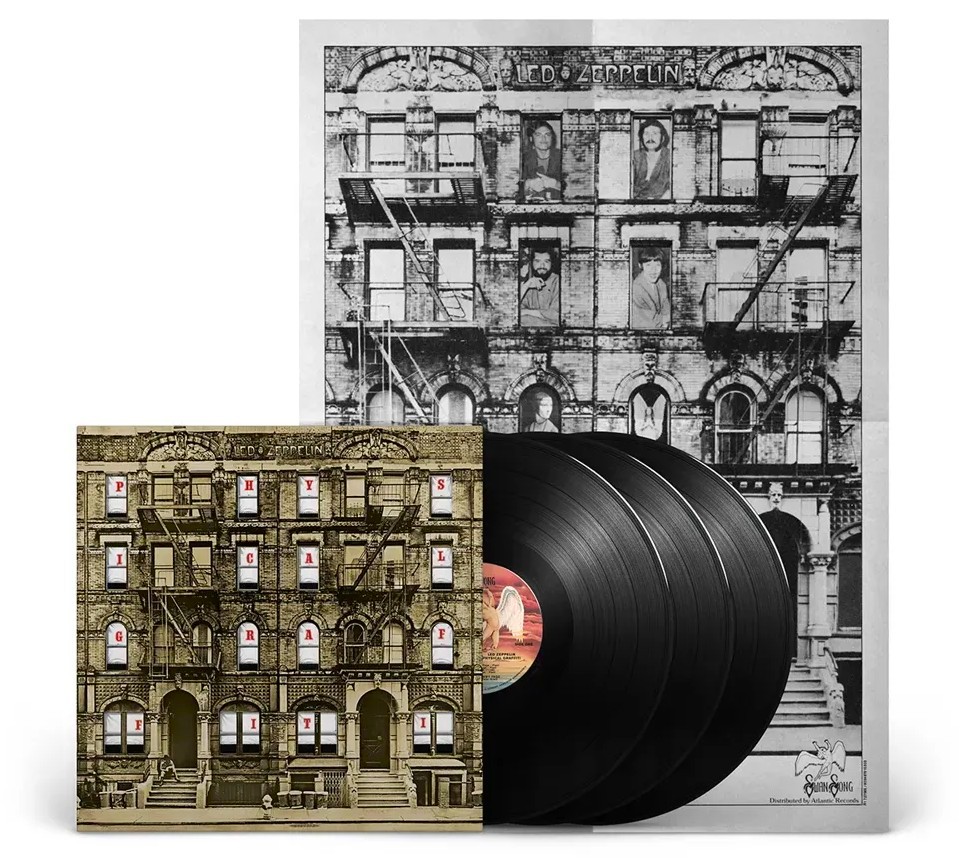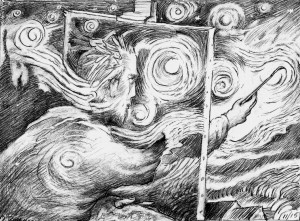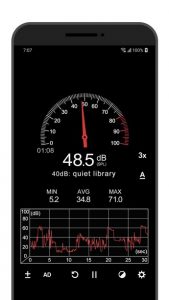Last week, a post on the Facebook group Streaming Music Matters generated quite a bit of interest and a long thread of responses. The post header read thusly: "Is this what Dan Fans have been waiting for?" The subject was the newly Bernie Grundman-remastered, 24-bit/192 kHz high-resolution files for Steely Dan's Aja that are now available for streaming on Qobuz. Acoustic Sounds is reissuing the Steely Dan catalog as remastered LPs and SACDs, and the high-resolution digital files are being released in advance of the physical media.
Streaming Music Matters is administered by David Solomon of Qobuz, and while streaming via Qobuz is definitely the focus, David has a lengthy "mission statement" posted on the main page. Here's a brief quote from it: "Full disclosure: I work for Qobuz and the page will lean in this direction as well as the love of music, in general. Streaming Music Matters is also dedicated to serving and educating the audio industry and music lover on high quality streaming audio." So the focus of the group is to help get you up to speed in the art of streaming digital music, along with a healthy dose of posts about all things music. And with a particularly pronounced emphasis on using Qobuz to stream your music—which is fine with me; I happen to currently think that Qobuz is the cream of the streaming crop.
Bashing Steely Dan seems to be more fashionable than ever. And in a world where so many audiophiles and/or manufacturers seem bent on playing music from a relatively narrow pool of artists to display the obvious superiority of their systems, Steely Dan invariably gets overplayed, often ad nauseam. So while I totally do get all the Dan-bashing and I don't worship at the altar of Donald Fagen and Walter Becker, I do have an appreciation for Steely Dan's music. And I've definitely awaited the SACD remasters from Acoustic Sounds with an elevated level of anticipation. I bought the first two Bernie Grundman remastered SACDs, Can't Buy A Thrill and Countdown To Ecstasy—and the ripped DSD files played across my digital streaming system are absolutely superb. I was keen to hear what magic Bernie had wrought with Aja, which in audiophile terms and in the digital age is possibly the most maligned recording in their entire catalog.
I entered a comment on the Facebook thread to the effect that I'd love to hear the 24/192 Aja head-to-head against the SACD, and David Solomon responded that he'd really like to hear my comments about the new digital files. I then responded that we'll have to wait for the SACD (it hasn't been released yet), but I also headed upstairs to take a quick listen via Qobuz. Here's the text of my response to him: "David Solomon, so no head-to-head comparison available yet, but I took a listen to the 24/192 files, compared them to my 16/44.1 rip of my original Aja CD, then listened to a few tracks from the other two Analogue Productions SACDs that have already been issued. I thought the 24/192 tracks sounded great, until I listened to the rip of the CD—which surprisingly, I thought sounded much better than I remembered it, and maybe...just maybe, a tad better than the high-res tracks on Qobuz. I know that seems counter-intuitive, but the CD was probably actually mastered from the original master tapes, and based on a quick comparison, it still holds up extremely well to the new Bernie Grundman remaster from an "analog, non-EQ'd tape copy"—which tells me that the original master is no longer available. The two SACDs—also mastered by Bernie Grundman, but from the original master tapes—definitely sound superior, and more true to the originals than this version of Aja does to me—at least, at this point. Listening at reference sound levels (interpret that as "loudly"), at the transitions between tracks, Bernie obviously made the decision not to use the digital "fade to zero" you typically hear on most CDs, choosing to allow whatever level of tape noise that was present on the original to continue between tracks, which makes hearing the 24/192 version very much akin to listening to an LP. I really like that, and a lot of really good recent remasters of classic titles have been doing that with digital releases. That said, the level of noise present in the 24/192 files far exceeds what you hear on the transitions between songs on the two Analog Productions SACDs that have so far been released. I don't mean that in a terribly bad way, but I just don't think that this version of Aja can match the clarity and punch of even the CD—I'm really going to have to give this another extended listen, and am really curious if the SACD will sound differently. Don't get me wrong—I'm not bashing it, but I'm not certain that this is the audiophile masterpiece version we might have been hoping for."
While my response could possibly be interpreted as somewhat harsh, I want to make it perfectly clear here, I'm no Steely Dan expert, just a fan of the band. But I found it instructive that—at least to my ears—my rip of my original catalog CD (that's often been damned for its less than stellar sound quality) sounded superior to the new transfer. The CD rip still showed the typical signs of early digital—like the aforementioned digital fade-to-black, which I don't love, but can live with. But it otherwise had a level of musicality and clarity that the new high-res file couldn't touch. On further listens to the new 24/192 remastered Aja, the analog tape noise I mentioned isn't just noticeable to me between the tracks—it's excessive, and can be heard throughout playback of the entire album—it's almost pervasive. And I don't have high hopes that the SACD will remedy that—I don't see how it possibly can.
I've been building a digital music library for a number of years, and an observation I've made with increasing frequency are the online recommendations to buy non-remastered CDs, if at all possible. Many swear that the original—or perhaps the second effort CD releases of classic albums—are far superior to their remastered counterparts. The cost of minty originals—if you can even find them—is often excessive. As an early adopter of digital, I'm quite familiar with the myriad of problems with its sound quality that were well-documented back in the day. A really clear example was the debacle surrounding the initial release of Donald Fagen's The Nightfly, which created a literal firestorm of awareness among consumers with regard to whether or not the original master tapes were being used to produce compact discs. That said, some of the best sounding CDs I own are among the very first I ever bought. I take all of this with a grain of salt, and fully realize that the ultimate sound quality of a particular release has much more to do with the condition of the master tapes and the care that was put into the transfer. I'm much less swayed by a badge of "high res" superiority—well-mastered 16/44.1 files played across a statement digital system often compare favorably with the best high res versions. That's not always the case, and I can name countless instances where remix/remasters are far superior to the originals. For example, just about anything Steven Wilson has been involved in; I count his work on the catalogs of Yes, King Crimson, XTC and many others among my most prized musical possessions.
I'm particularly enamored with DSD playback; I have 400+ DSD albums on my server, and about half of those are albums that I love and listen to with some regularity. DSD for me often elevates the digital listening experience to something much more akin to hearing good analog. I've actually ordered out-of-print SACD versions of albums and paid exorbitant prices for them—for example, discs on the Audio Fidelity label that were remastered by Steve Hoffman. Hearing those has been revelatory for me, and they're worth every penny—if a DSD version exists of a grail album I hold in really high regard, I'm generally willing to take the plunge and chance getting the SACD. After all, if the audio software isn't of sufficient quality, nothing you attempt to play it on will make that much of a difference to your ultimate listening enjoyment. It's a double-edged sword, but I'm often willing to stand on the edge to find out.
After hearing the brilliance of the first two new Steely Dan SACDs, I had high hopes for Aja, but since hearing the 24/192 files via Qobuz—maybe not so much. The key descriptors with regard to Analogue Productions' upcoming SACD are "remastered from an analog, non-EQ'd tape copy"—as I mentioned above, that obviously translates into not having access to the original master tapes. In a world where original master tapes are frequently lost, have been destroyed by fire, or have otherwise suffered from the ravages of time, original master perfection often may no longer be possible. And with the level of hiss I'm hearing on the 24/192 files, the "analog, non-EQ'd tape copy" that was used here is probably a couple of generations away from the master tape. I'll still buy the SACD, and I'll wait until then to pass final judgment, but I'm fairly certain that this may be one of those worst-case scenarios.
There's been a fair amount of conversation recently as to whether "CD quality" is "high res." At the point when the Steely Dan catalog albums were first being transferred to CD, none other than Steve Hoffman was employed by MCA to master a first version of Aja from the original master tapes—and it's widely considered to be the very best version that exists, if you can find one! At least 5000 CDs were pressed and distributed, but for some unknown reason, Becker and Fagen pulled the plug on Hoffman and went with a different remaster for the subsequent early CDs. You can read about that and all the various Aja mastering attempts HERE, but take my word for it, following the Aja remastering trail is ridiculously convoluted, and it's well-documented that there were obvious problems with the master tapes from early on.
Considering how the whole "high-res Aja" experience has evolved for me, maybe the lowly Compact Disc is good enough— especially if it's old enough!
All images courtesy of Qobuz and the author.




